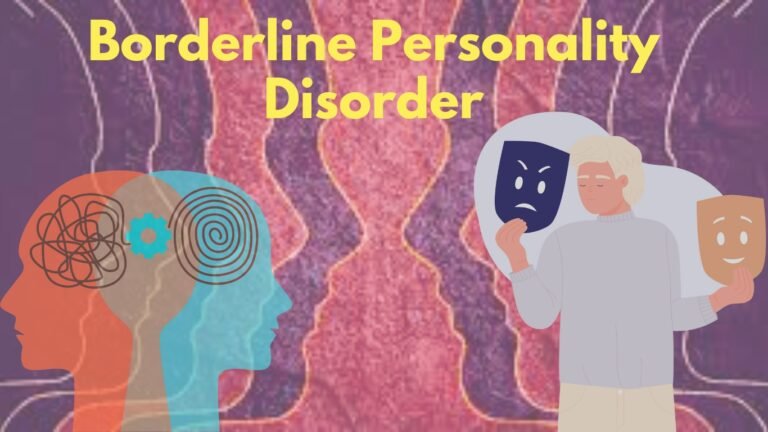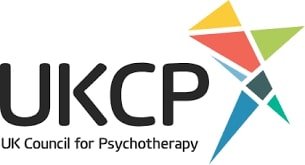
Understanding Borderline Personality Disorder (BPD): Symptoms, Causes, and Effective Treatment
Borderline Personality Disorder (BPD) is a complex mental health condition, characterised by emotional instability, troubled relationships, and an intense fear of abandonment. While life with BPD can feel overwhelming, proper therapy and support make it possible to manage symptoms and lead a fulfilling life.
In this comprehensive guide, we’ll explore what BPD is, its symptoms, potential causes, and proven treatments to help individuals regain control and achieve emotional stability.
What is Borderline Personality Disorder?
Borderline Personality Disorder (BPD) is a mental health disorder that affects how individuals perceive themselves and connect with others. It is primarily characterized by emotional dysregulation, impulsivity, and intense mood swings, often leading to unstable relationships.
As one of several recognized personality disorders, BPD involves persistent patterns of thoughts, emotions, and behaviors that deviate from social norms, causing distress or impairment in daily functioning. While it is diagnosed more frequently in women, it can affect people of any gender, typically emerging in adolescence or early adulthood.
Common Symptoms of Borderline Personality Disorder:
BPD symptoms can vary, but the most common psychological signs include:
- Emotional Dysregulation – Difficulty managing emotions, leading to intense and prolonged emotional responses to minor triggers.
- Fear of Abandonment – Persistent worry about abandonment and/or rejection, often resulting in clingy (or conversely, avoidant) behavior.
- Unstable Relationships – Frequent shifts between idealising and devaluing loved ones, causing volatile relationships.
- Impulsive Behaviors – Engaging in risky behaviours; for example, overspending, substance abuse, reckless driving, or binge eating.
- Distorted Self-Image – This can lead to issues with self-identity, and thereby feelings of insecurity or lack of direction.
- Self-Harm and Suicidal Tendencies – Use of self-injury, or suicidal thoughts, as a coping mechanism for emotional pain.
- Rapid Mood Swings – Extreme mood fluctuations lasting hours or days, affecting interactions and decision-making.
- Chronic Feelings of Emptiness – Persistent feelings of void or dissatisfaction with life.
- Paranoia or Dissociation – Stress-induced paranoia or a sense of disconnection from reality.
Recognising these symptoms early is crucial for seeking timely support and developing an effective treatment plan.
What Causes Borderline Personality Disorder?
The causes of BPD are multifaceted and involve a combination of genetic, environmental, and neurological factors.
- Genetic Predisposition – Members of families in which member(s) have BPD or other personality disorders are at a higher risk of developing BPD themselves, indicating a potential hereditary link. However, genetics alone do not determine the disorder.
- Environmental Factors – Traumatic experiences such as childhood abuse, neglect, or unstable family dynamics can increase the risk of developing BPD.
- Brain Structure and Chemistry – Differences in brain areas responsible for emotional regulation and impulse control, such as the amygdala and prefrontal cortex, may contribute to the disorder.
- Psychological Traits – People with heightened sensitivity to stress or emotional stimuli may be more prone to BPD.
Understanding these root causes helps in personalising treatment approaches for individuals with BPD, promoting long-term recovery.
How is Borderline Personality Disorder Diagnosed?
Diagnosing BPD involves a comprehensive assessment by a licensed mental health professional. The process typically includes:
- Clinical Interviews – Discussing symptoms, triggers, and behavioral patterns.
- Diagnostic Criteria Evaluation – Assessing symptoms against the DSM-5 guidelines for personality disorders.
- Mental Health History – Exploring family and personal history to rule out co-occurring conditions like bipolar disorder or anxiety disorders.
Accurate diagnosis of BPD or other personality disorders is thus crucial in creating an effective treatment plan.
Treatment Options for Borderline Personality Disorder
Although there is no single cure, or treatment, for BPD, several evidence-based treatments can significantly improve emotional regulation and quality of life for individuals with BPD:
- Cognitive Behaviour Therapy (CBT)
- CBT focuses on helping the individual to recognise and understand patterns of unhelpful thoughts and behaviours, thereby supporting their modification.
- CBT thus supports the individual to explore their thoughts, challenge self-limiting or unhelpful thoughts and beliefs, and develop more positive, balanced ways of thinking;
- Dialectical Behavioural Therapy (DBT)
- DBT focuses on mindfulness, distress tolerance, emotional regulation, and interpersonal effectiveness, thereby improving resilience against emotional challenges.
- DBT is thus particularly effective for individuals with BPD.
- Schema-Focused Therapy (SFT)
- SFT teaches healthier emotional regulation and management mechanisms in the context of deep-rooted patterns (schemas) formed during childhood, theorised to form part of the psychological roots of experiencing BPD.
- Thus, SFT teaches individuals with BPD healthier coping mechanisms for long-term recovery.
- Mentalisation-Based Therapy (MBT)
- MBT enhances the ability for individuals to interpret and respond to others’ emotions and intentions, thereby improving relationship dynamics.
- Group Therapy
- Group therapy provides a supportive environment for participants with BPD and other personality disorders, wherein participants share their experiences and learn psychological skills collectively.
Managing Life With Borderline Personality Disorder
Living with BPD can be challenging.
However, adopting the following lifestyle choices/changes can enhance emotional stability and daily functioning, as part of BPD management:
- Build a Support Network – Surround yourself with trusted friends, family, and therapists who can provide emotional support.
- Practice Mindfulness – Activities like meditation and grounding exercises can help reduce emotional reactivity.
- Develop Healthy Coping Mechanisms – Replace impulsive behaviors with productive activities like journaling, exercising, or engaging in creative arts.
- Adhering to Your Treatment Plan – Attend therapy sessions consistently and follow prescribed treatments (including prescribed medication, where indicated by your psychiatrist/doctor) for long-term progress.
- Educate Yourself and Others – Raising awareness about BPD reduces stigma and fosters understanding.
Relationships and Borderline Personality Disorder
BPD can present unique challenges in relationships. Effective approaches include:
- Open Communication – Maintain transparency about emotions and expectations.
- Setting Boundaries – Establish clear, respectful boundaries to build trust.
- Couples or Family Therapy – Work through issues collaboratively to strengthen relationships.
When to Seek Professional Help
If you or someone you know is struggling with BPD, it’s important to seek help if you notice:
- Consistent emotional instability or impulsive behaviors.
- Frequent self-harm or suicidal thoughts.
- Difficulty maintaining relationships and/or performing daily tasks.
Early intervention can thereby prevent worsening symptoms, promoting lasting mental health improvements.
ongoing therapy, a strong support system, and dedication to self-care, many individuals with BPD go on to lead meaningful and happy lives.
Borderline Personality Disorder may be complex, but it is treatable with appropriate resources and therapies.
Through understanding its symptoms, causes, and treatment options, individuals and their loved ones can work toward emotional stability and healthier relationships.
If you or someone you know is living with BPD, don’t hesitate to seek help. A mental health professional can guide you on the path to recovery and growth.
Remember—healing is possible, and a brighter future awaits!




All Rights Reserved.

